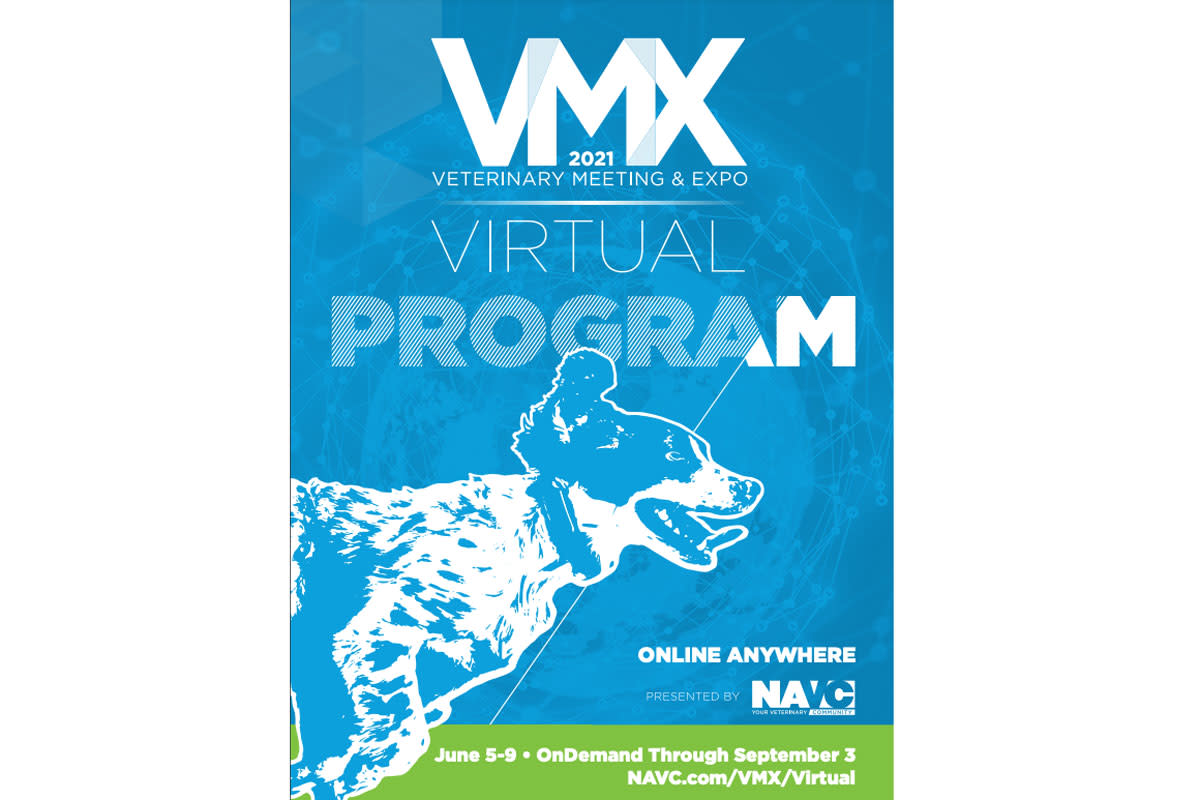
While the North American Veterinary Community (NAVC) is mostly focused on small animals, the leaders of the organization made a decision to continue to include all species and all practitioners in their educational offerings.
The Veterinary Meeting and Expo (better known as VMX) usually is held every January in Florida. Due to the pandemic, this year it begins today, June 5, 2021. There is a live and virtual component to the VMX, with medical and business topics of interest for equine veterinarians.
Eugene (Gene) O’Neill joined the NAVC in 2013 as Chief Financial Officer. He was promoted to Deputy CEO and CFO in 2018 and, after serving as interim CEO from late 2019 through early 2020, he was named CEO in April 2020.
“We came out of the 2020 VMX last January as one of our most successful events,” said O’Neill. “We were pumped for January 2021.”
Then the pandemic hit, and O’Neill said the conference was forced to “pivot” from its usual schedule.
“But this provided us an opportunity in the virtual market to enter at a slower pace and look to the future,” said O’Neill. That, he said, has allowed them to do a better job at providing virtual education.
He said his team, like many other organizations and corporations, had the usual difficulties with collaborating virtually during the pandemic. But the NAVC had already worked hard to weave virtual elements into the fabric of their educational offerings, and the organization will continue to virtually enhance their current products.
Because O’Neill was the Chief Financial Officer before he became CEO, he had helped guide the NAVC toward becoming a more sustainable and diverse education provider. Areas of growth included developing a world-class media/publishing division, veterinary medical and business education on various platforms, and education for veterinary nurses.
A brief history of the NAVC shows the movement toward a more diverse and encompassing all-species veterinary education organization:
1984: The NAVC begins as the Eastern States Veterinary Conference, which brings professionals from all over the world to Orlando, Florida.
1991: Eastern States Veterinary Conference is renamed The North American Veterinary Conference.
1996: The NAVC launches the International Scholars program, which brings leading veterinary professionals to the NAVC Conference to share their ideas and insight.
2001: Practitioners show up for five days of intensive, in-residence skills and techniques training at the first NAVC Institute, originally named the NAVC Post Graduate Institute.
2005: We join forces with our conference partners, the Latin American Veterinary Conference (LAVC) and Southern European Veterinary Conference (SEVC) to spread cutting-edge veterinary education across the world.
2005: The NAVC focuses on students and launches opportunities to educate schools better by providing a scholarship to one student at each of the Veterinary schools in the US, Canada and the Caribbean annually.
2008: Veterinarians and Veterinary Nurses/Technicians venture to Antarctica in February for the first NAVC Expedition.
2013: The “C” in NAVC changes to Community… we become the North American Veterinary Community, a name that better reflects our association’s role in uniting and empowering veterinary professionals around the world.
2014: The NAVC launches VetFolio.com, a website and community that takes the NAVC Conference and brings it to all veterinary healthcare professionals and students in an affordable, year-round, 24/7 mobile-responsive platform.
2014: Today’s Veterinary Practice, the peer-reviewed industry journal and website, joins NAVC’s product portfolio, making it the official journal of the NAVC.
2015: We team up with AAHA (the American Animal Hospital Association) to expand VetFolio.com: subscribers can access AAHA’s in-depth collection of educational and practice management resources as well as comprehensive resources from the NAVC Conference.
2015: The NAVC, AAHA and LifeLearn collaborate on Sofie™ (powered by IBM Watson): VetFolio.com content, combined with Sofie’s cognitive computing capabilities, gives veterinarians instant access to evidence-based treatment information.
2016: Today’s Veterinary Technician, peer-reviewed industry journal and website, joins NAVC’s product portfolio, making it the second official journal of the NAVC.
2016: Veterinary Advantage Magazine, serving the animal health distribution channel and its constituents, is acquired by the NAVC as an official publication.
2017: Today’s Veterinary Business is added as the first addition to the NAVC family of publications that solely focuses on the business side of the animal health practice.
2017: Spark! the NAVC’s online video channel launches.
2018: Inaugural event under the new name of Veterinary Meeting & Expo (VMX), formerly the NAVC Conference. Today’s Veterinary Technician changes its name to Today’s Veterinary Nurse and the NAVC Learning Academy launches the Human-Animal Bond Certification course.
2018: NAVC Retriever, the first veterinary exclusive mobile app to pair professionals seeking employment opportunities with practices looking for talented individuals launches.
2019: The NAVC enters into a partnership with LifeLearn Animal Health to bring the veterinary profession a new and improved VetFolio.com.
From a Veterinarian’s Perspective
Dana Varble, DVM, took over as Chief Veterinary Officer in 2020 after having worked with NAVC in several roles. When asked what veterinarians have learned from the pandemic, her first comment was that veterinarians learned how much they missed the personal interaction with their clients. But she added that veterinarians want more quality time with clients, which means they need to better use team members in practice.
She also said veterinarians learned during the pandemic how important it is to communicate with owners through emails, auto messages and other digital means.
As for the NAVC and veterinary education, Varble said one of the best things about more virtual outreach to veterinarians is that “virtual allows veterinarians to prepare before events and to follow up. That might be getting in touch with the instructor or using the ‘Vet Bites’ (summaries of presentations) afterward.”
Veterinarians can learn more about the VMX Virtual offerings going on now by visiting NAVC.com.








